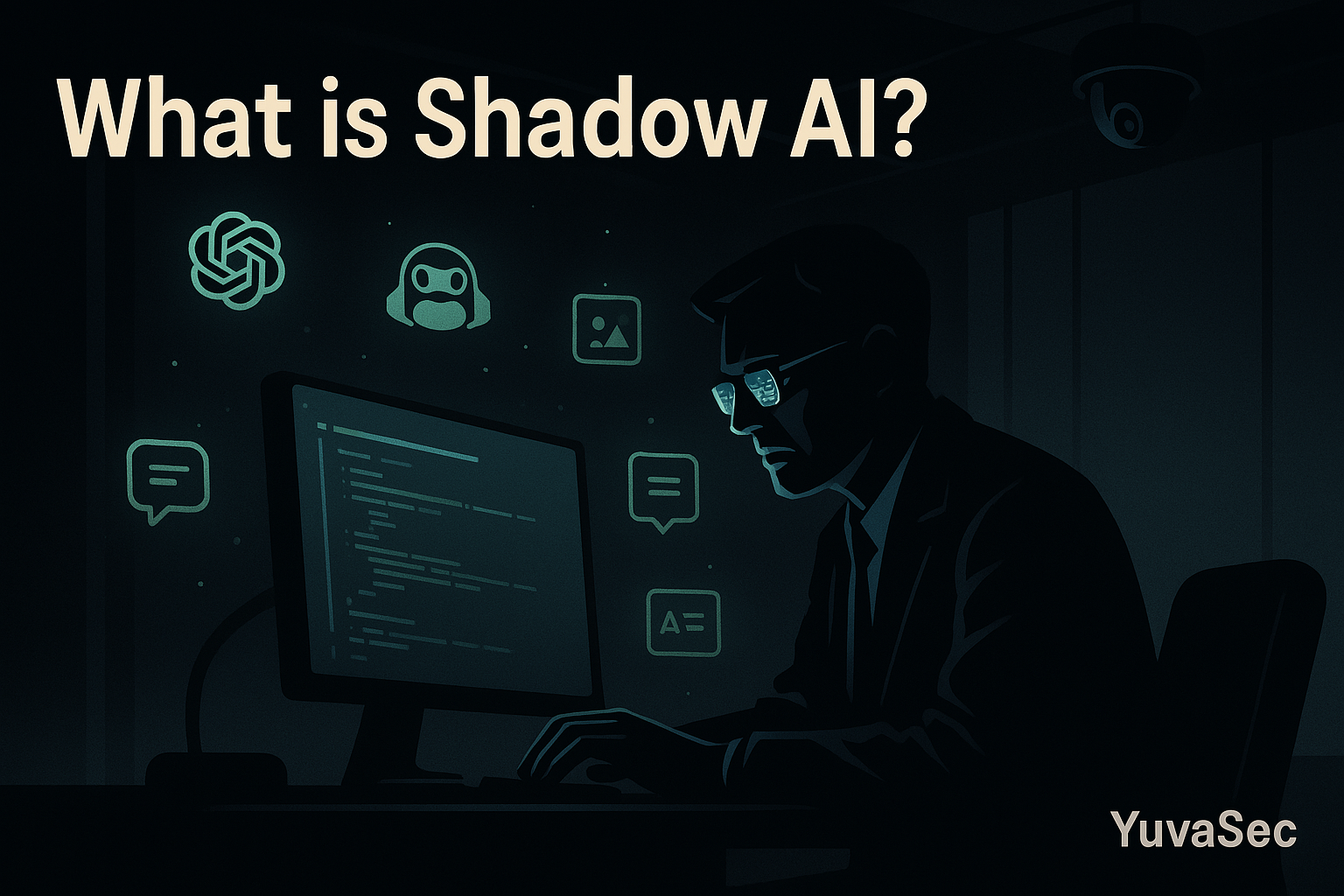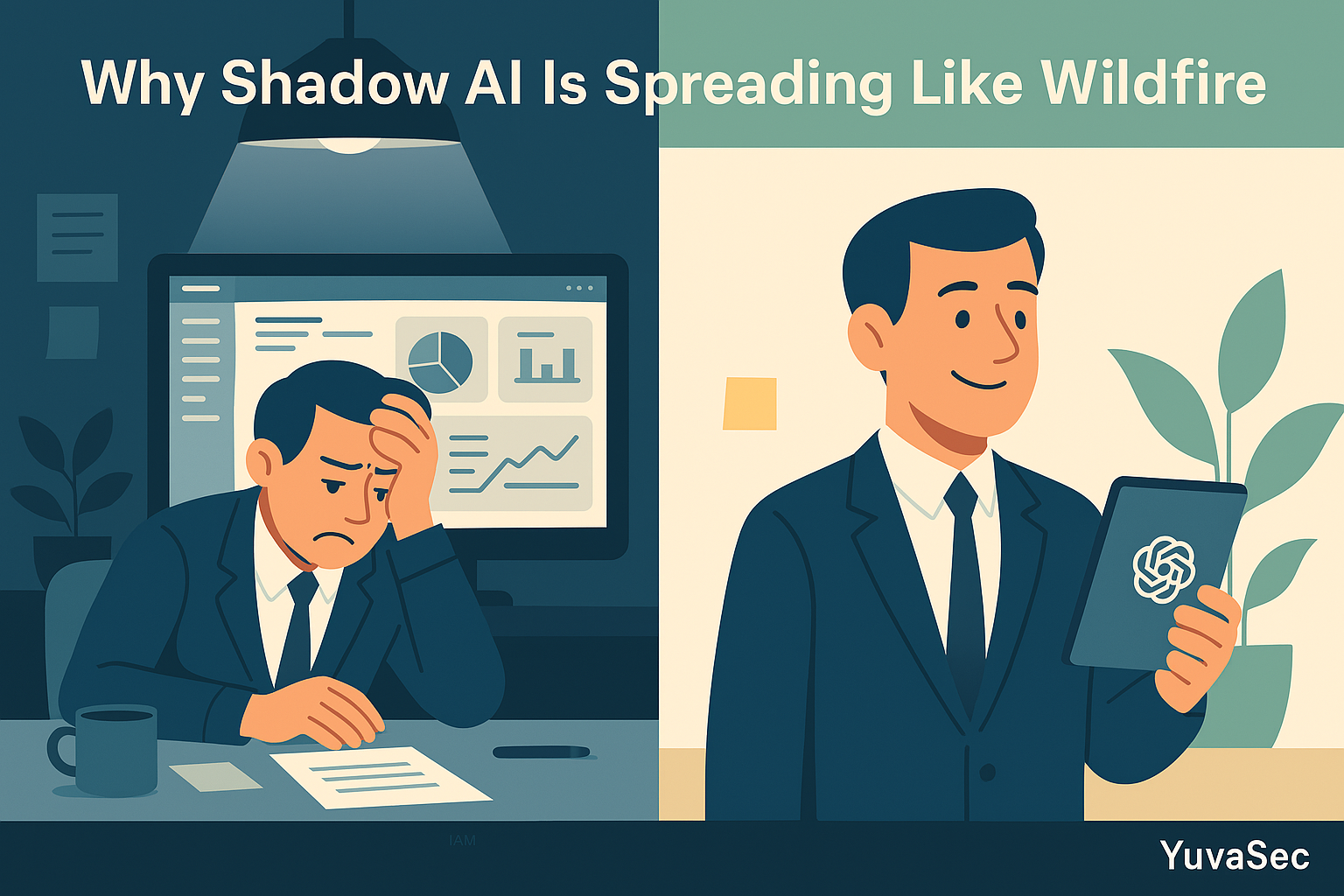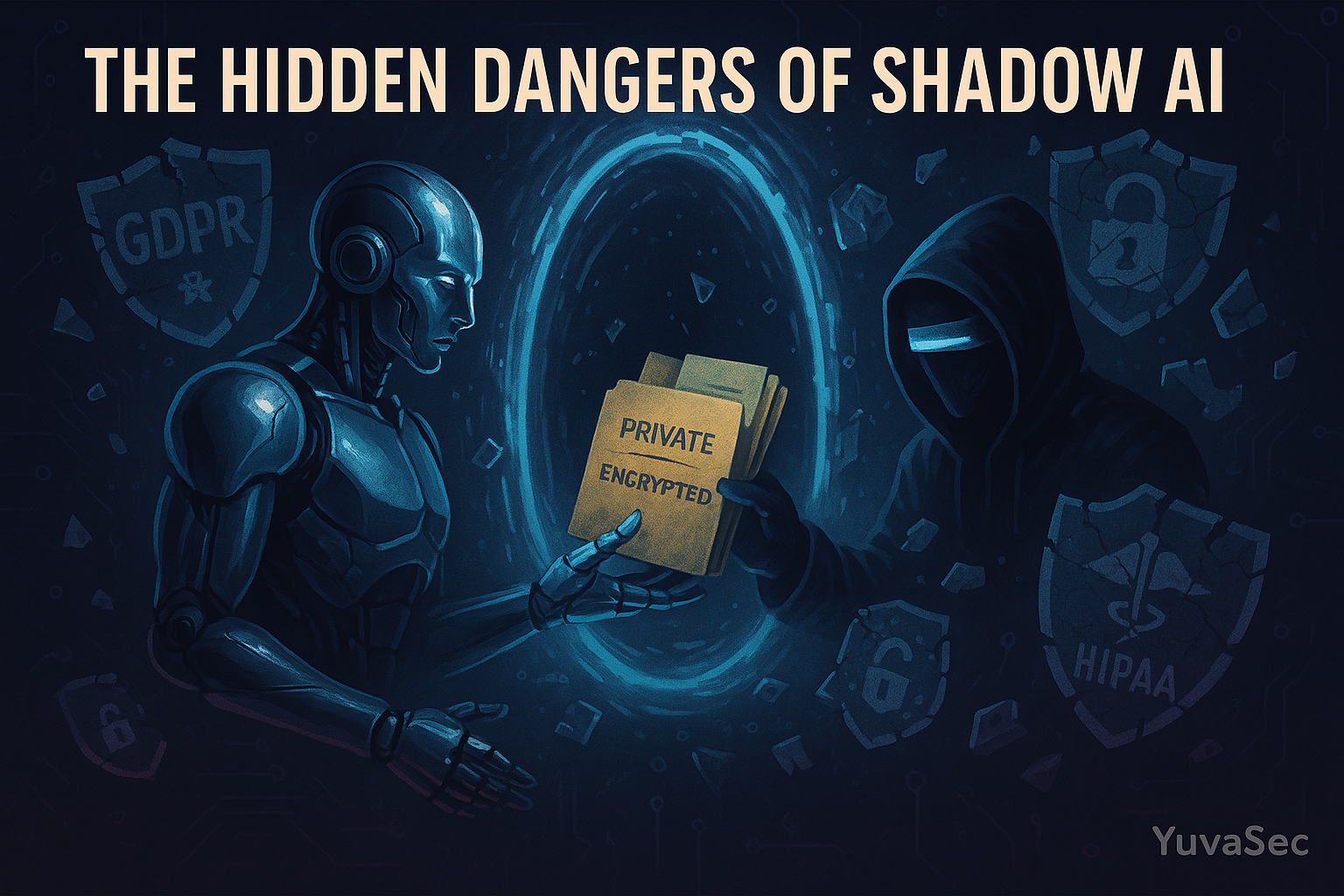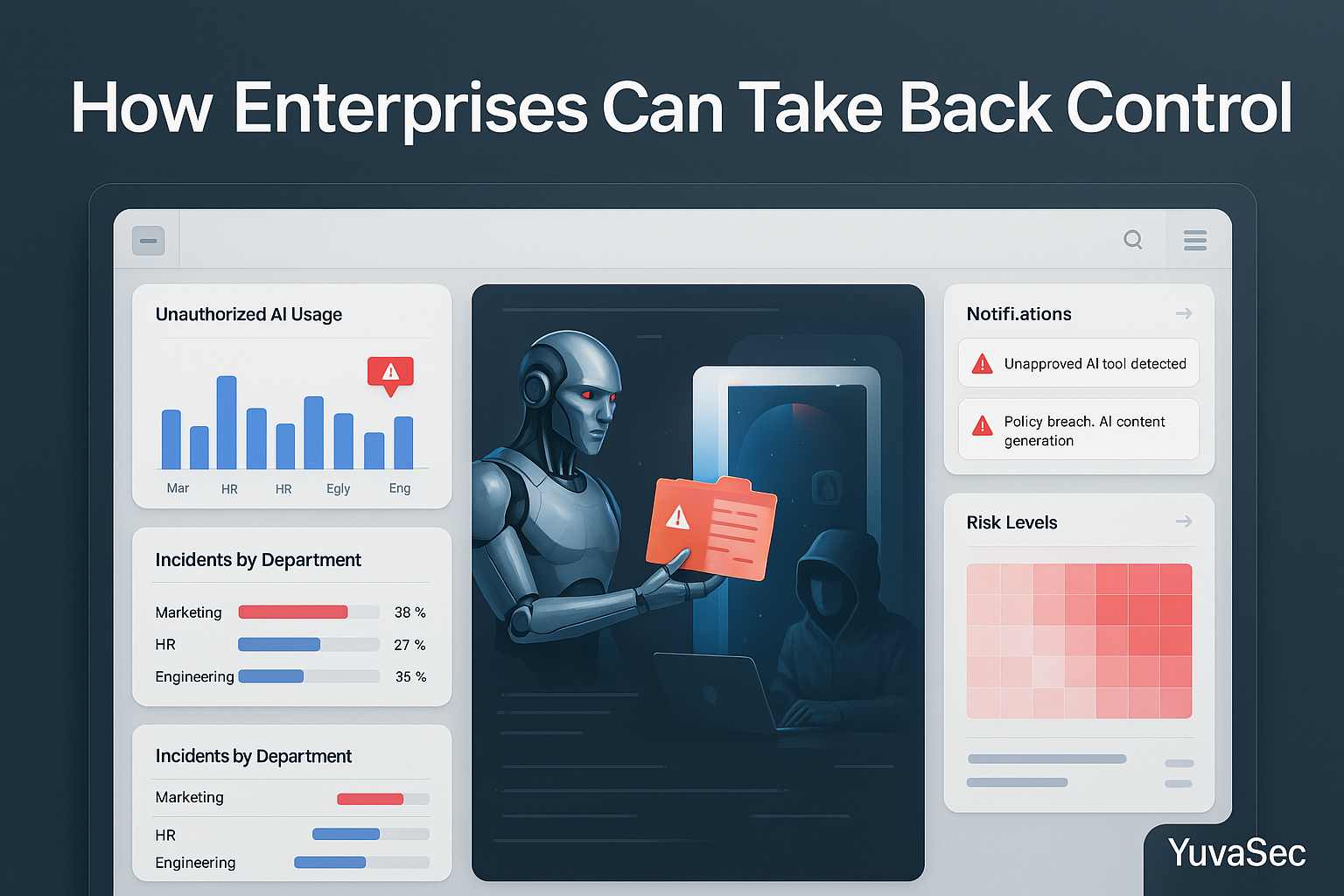What is Shadow AI, and Why Should Your Enterprise Care?
 YuvaSec
YuvaSec
Introduction
So, picture this: a marketing manager's racing against the clock and fires up ChatGPT to crank out a campaign email. Quick, easy, and done, except they didn’t tell IT. What just happened? A big chunk of the company’s strategy just went straight into an unknown AI system.
Welcome to the era of Shadow AI.
More and more employees are using AI tools under the radar. It’s fast, and it helps get things done, but it also quietly puts your company at risk.
In this post, we’re diving into what Shadow AI is, why it’s taking off, and why ignoring it could cost your enterprise big time.
Thesis: Shadow AI is a double-edged sword great for productivity but a ticking time bomb for security. Understanding it isn’t optional anymore; it’s a must.
What is Shadow AI?

The Definition and Distinction
Shadow AI is when employees start using AI tools like ChatGPT, DALL·E, or GitHub Copilot on the job without letting the IT or security teams know. It’s kind of like Shadow IT, but instead of unapproved apps or hardware, we’re talking about generative AI and smart systems flying under the radar.
Even if someone’s using an approved app, they might accidentally turn on new AI features that haven’t been reviewed by IT.
Why This Matters:
People might share sensitive info in prompts, which could end up leaking.
Some AI tools can learn from that data, which could break compliance rules.
If IT can’t see it, they can’t control it, and that can lead to big problems with your reputation or even the law.
Why Shadow AI Is Spreading Like Wildfire

Employees Want Results—Fast
People are using AI to crank out reports, sum up emails, and even write code.
Most say it makes them feel faster, more creative, and in control.
In some companies, unofficial AI use shot up 250% in just one year.
The DIY AI Economy
A lot of the tools are free or super cheap SaaS apps.
People often skip the long IT approval process and just use what works.
And get this: more than 50% say they'd keep using AI secretly, even if it’s not allowed.
IT Can’t Keep Up
Official enterprise tools often miss the mark on what employees actually need.
So, workers turn to shadow AI to fill in the gaps.
The Hidden Dangers of Shadow AI

Security & Privacy Risks
AI tools might remember and spit back sensitive info you didn’t mean to share.
For instance, Samsung engineers accidentally leaked some proprietary code through ChatGPT.
Some rogue AI models could even have hidden flaws or backdoors that hackers can exploit.
Compliance Headaches
Laws like GDPR, HIPAA, and CCPA (and soon, the EU AI Act) require tight control over data.
But a lot of AI tools just don’t play by those rules.
Once something like a trade secret gets shared through generative AI, you might lose legal protection for it.
Growing Attack Surface
Chatbots can get tricked into helping with phishing attacks.
Shadow AI tools using APIs might quietly create new entry points for hackers.
Expert Insights
“Shadow AI is not just a tech risk—it’s a people issue. Employees are innovating faster than the enterprise can govern.”
— Dr. Katie Hartwell, Head of AI Ethics, Stanford Cyber Policy Lab“Banning AI outright pushes it underground. The solution is governance and guidance—not lockdown.”
— Rohan Gupta, Chief Information Security Officer at SyncSecure
How Enterprises Can Take Back Control

1. Develop a Responsible AI Policy
Be clear about what’s okay and what’s not.
Share a list of approved tools—and what’s off-limits.
Keep things updated as new tech shows up.
2. Offer Better, Secure AI Options
Use secure platforms like Azure ML or Google Vertex.
Offer internal AI tools with strong controls and logging.
3. Educate Your People
Teach safe prompt writing and how to handle data properly.
Run misuse scenarios so they’re ready for real-world risks.
Make training part of the culture, not just a checkbox to tick.
4. Monitor and Detect Usage
Use tools like SIEM to track where your data is going.
Catch risky prompts in real time with inline DLP.
Tools like BigID or Grip can help you map out how AI is being used across your organisation.
Conclusion
Chances are, Shadow AI’s already being used in your company—boosting productivity on one hand, but quietly opening up security risks on the other.
You can’t just pretend it’s not happening. And banning it? That’s just a quick fix, not a real solution.
The better move? Embrace it, teach people how to use it wisely, and set clear boundaries.
Your company’s AI game shouldn’t be happening behind the scenes. Let’s bring it into the open where it belongs.
Further Reading
Subscribe to my newsletter
Read articles from YuvaSec directly inside your inbox. Subscribe to the newsletter, and don't miss out.
Written by

YuvaSec
YuvaSec
Cybersecurity Enthusiast | Ex-Mechanical Engineer | Lifelong Learner Pivoting into InfoSec On a mission to build skills, break stuff (ethically), and land a job in cybersecurity.